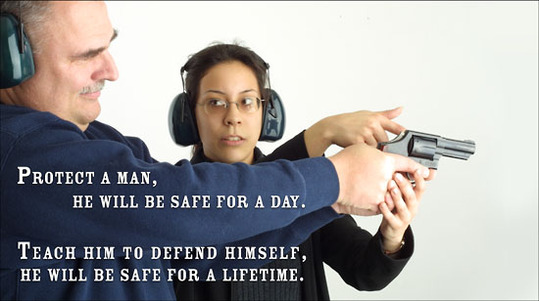
Used with permission.
Originally published at Guns Save Life.com
Carrying a gun lawfully for self-defense can make the difference
between life and death in a critical incident, yet at the same
time it can be fraught with risk to the carrier thanks to a long
list of laws and regulations.
In the perfect world, you wouldn’t need a permit to carry, nor
training in the use of a firearm effectively for self-defense.
Unfortunately, the world isn’t perfect and neither are people.
All it takes is a single incident of oversight, sloppy gun handling, or lousy gear and you can find yourself without a permit at best and in jail at worst. And heaven help you if you have a
negligent discharge or pull your gun without proper legal justification. Make those mistakes and you may end up in prison!
By seeking quality, comprehensive training, the risks of carrying are greatly diminished and more importantly, the odds of prevailing in a deadly force encounter are significantly enhanced.
Originally published at Guns Save Life.com
Carrying a gun lawfully for self-defense can make the difference
between life and death in a critical incident, yet at the same
time it can be fraught with risk to the carrier thanks to a long
list of laws and regulations.
In the perfect world, you wouldn’t need a permit to carry, nor
training in the use of a firearm effectively for self-defense.
Unfortunately, the world isn’t perfect and neither are people.
All it takes is a single incident of oversight, sloppy gun handling, or lousy gear and you can find yourself without a permit at best and in jail at worst. And heaven help you if you have a
negligent discharge or pull your gun without proper legal justification. Make those mistakes and you may end up in prison!
By seeking quality, comprehensive training, the risks of carrying are greatly diminished and more importantly, the odds of prevailing in a deadly force encounter are significantly enhanced.
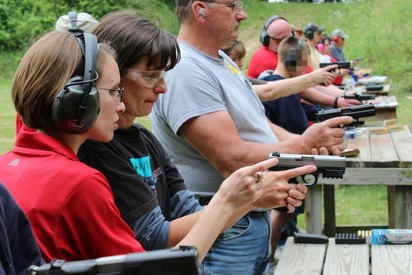
ALL TRAINING ISN’T EQUAL!
Increasingly, with the proliferation of everyone and their dog
offering “concealed carry classes”, training courses aren’t all
high-quality affairs.
In fact, they run the gamut from inadequate and incompetent to
thorough, well-presented programs designed for those who wish to
learn how to avoid confrontation and have every advantage should
they ever find themselves a reluctant participant in a deadly force encounter.
Of course, the best way to win any gun battle is to avoid it altogether. Where this is not possible, training will make the difference between whether it was luck or skill that allowed you
to prevail.
Most forward-thinking folks would rather not rely on dumb luck to win a life-and-death struggle. This is where proper course selection could someday pay huge dividends to you and your loved ones.
The skill sets needed to use a firearm decisively to defend yourself can be broken down into three subsets. The best training will incorporate all three areas for their students.
Increasingly, with the proliferation of everyone and their dog
offering “concealed carry classes”, training courses aren’t all
high-quality affairs.
In fact, they run the gamut from inadequate and incompetent to
thorough, well-presented programs designed for those who wish to
learn how to avoid confrontation and have every advantage should
they ever find themselves a reluctant participant in a deadly force encounter.
Of course, the best way to win any gun battle is to avoid it altogether. Where this is not possible, training will make the difference between whether it was luck or skill that allowed you
to prevail.
Most forward-thinking folks would rather not rely on dumb luck to win a life-and-death struggle. This is where proper course selection could someday pay huge dividends to you and your loved ones.
The skill sets needed to use a firearm decisively to defend yourself can be broken down into three subsets. The best training will incorporate all three areas for their students.
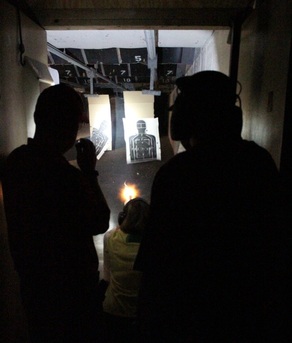
The Mindset.
Mindset is the knowledge and psychological attitudes needed to
lawfully utilize deadly force for self-defense. This includes the
legal parameters of when deadly force is appropriate (regardless
of the weapons system) and mental preparation for dealing with all
aspects of a violent encounter at home or in public.
This particular aspect of training emphasizes avoiding conflict,
layering your defenses and teaching you the standard by which you
will be judged. A well-taught class will keep you out of jail for
inappropriately introducing a weapon – firearm or otherwise – into
a confrontation.
Mindset is the knowledge and psychological attitudes needed to
lawfully utilize deadly force for self-defense. This includes the
legal parameters of when deadly force is appropriate (regardless
of the weapons system) and mental preparation for dealing with all
aspects of a violent encounter at home or in public.
This particular aspect of training emphasizes avoiding conflict,
layering your defenses and teaching you the standard by which you
will be judged. A well-taught class will keep you out of jail for
inappropriately introducing a weapon – firearm or otherwise – into
a confrontation.
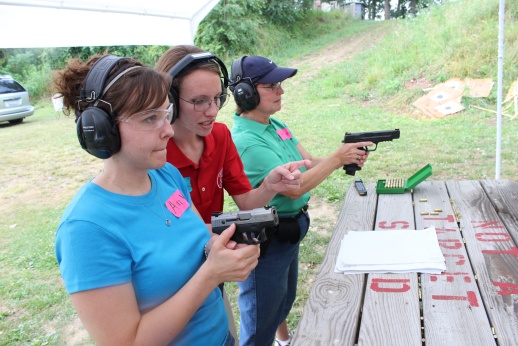
Functional ability/training.
The functional ability training consists of knowing how to make your gun work, and the ability to use it safely and effectively, and the associated aspects of its proper care and feeding.
Any reputable course will inculcate you with basic firearm safety. Exercising proper muzzle discipline and keeping your finger off the trigger until you have decided to shoot should be as natural as breathing. Sadly, for those who haven’t had good training, poor muzzle control and trigger finger discipline are the norm.
Gun selection plays an important role as well. Some folks may have compatibility issues with the gun they like, making it a bad choice for them as they are unable to operate it effectively.
Arthritis, hand strength or other physical limitations are a common cause for these issues, as well as a lack of familiarity with a firearm’s controls.
The functional ability training consists of knowing how to make your gun work, and the ability to use it safely and effectively, and the associated aspects of its proper care and feeding.
Any reputable course will inculcate you with basic firearm safety. Exercising proper muzzle discipline and keeping your finger off the trigger until you have decided to shoot should be as natural as breathing. Sadly, for those who haven’t had good training, poor muzzle control and trigger finger discipline are the norm.
Gun selection plays an important role as well. Some folks may have compatibility issues with the gun they like, making it a bad choice for them as they are unable to operate it effectively.
Arthritis, hand strength or other physical limitations are a common cause for these issues, as well as a lack of familiarity with a firearm’s controls.
Tactical training.
Tactical is not “tacticool” where people dress up in “cool guy” gear to pretend they are something they aren’t.
Instead, it is the practical, hands-on study of the tactics needed to fight with your personal defense tools. This includes learning proper use of cover and concealment, proper presentation of the gun, situational awareness, proper force “application” strategies, malfunction clearing procedures, proper reloading and so much more.
Reading a book or watching a video can serve to introduce these concepts, but there’s no substitute for doing it for yourself under the tutelage of a skilled instructor who will ensure you’re
using proper technique and minimizing wasted movement. This allows you to act decisively, without “thinking” about the mechanics of what you are going to do once you’ve decided to act.
The old saw of how you won’t rise to the occasion but instead default to your level of training is pretty much true. Indecisiveness, wasted movement and/or poor skills will get you
killed unless you’re a very lucky soul.
Tactical is not “tacticool” where people dress up in “cool guy” gear to pretend they are something they aren’t.
Instead, it is the practical, hands-on study of the tactics needed to fight with your personal defense tools. This includes learning proper use of cover and concealment, proper presentation of the gun, situational awareness, proper force “application” strategies, malfunction clearing procedures, proper reloading and so much more.
Reading a book or watching a video can serve to introduce these concepts, but there’s no substitute for doing it for yourself under the tutelage of a skilled instructor who will ensure you’re
using proper technique and minimizing wasted movement. This allows you to act decisively, without “thinking” about the mechanics of what you are going to do once you’ve decided to act.
The old saw of how you won’t rise to the occasion but instead default to your level of training is pretty much true. Indecisiveness, wasted movement and/or poor skills will get you
killed unless you’re a very lucky soul.
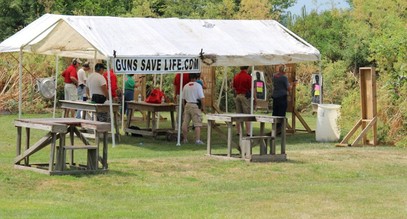
FINDING A GOOD COURSE
Better, more enjoyable courses will share many common attributes.
Here are some:
Look for experienced instructors. While everyone has to start somewhere, previous instructional experience measured in years, not months, will usually lead to a better end result for you, the
consumer / student. If they try to razzle-dazzle you with experience in the Boy Scouts, ROTC, or “personal interest”, or a long list of certifications without offering how much experience
they have actually teaching real students, look out.
Look for instructors who have been to some of the nationally-known schools. Instructors who have continued their education at top-tier national schools will bring lessons and teaching techniques they’ve learned from the nationally-respected masters to your local class.
“Team teaching” is always a good thing, as instructors can teach to their strengths and students enjoy hearing a more diverse set of perspectives. Sure, the instructors make a lot less individually when utilizing “team teaching”, but end result is a better educational experience for the students.
A “team” of instructors also offers greater opportunities for the student to get more one-on-one help as needed, particularly on the firing line during live fire.
Previous law enforcement or military instructional experience is a bonus, especially if it is in the arena of training the elites of military or law-enforcement. Again, it’s about bringing
applicable aspects of the latest tactics to the local students.
High instructor to student ratios. We can’t stress this one enough, especially for range exercises. If you have one or two instructors trying to run a range with ten or twelve entry-level
students on the firing line at once, you’re getting badly short-changed as a student and it’s not as safe as it could be.
Courses that offer more than the minimum. Good instructors won’t cut corners, but in fact will supplement the required material with valuable and useful information they have learned from other
schools or instructors.
Referrals, testimonials, and word of mouth are all things to look for in reputable, experienced instructors. Ask your friends who have been to a class what they thought of it. Visit your local
gun club or gun rights organization and ask those present for recommendations on instructors and/or classes.
Better, more enjoyable courses will share many common attributes.
Here are some:
Look for experienced instructors. While everyone has to start somewhere, previous instructional experience measured in years, not months, will usually lead to a better end result for you, the
consumer / student. If they try to razzle-dazzle you with experience in the Boy Scouts, ROTC, or “personal interest”, or a long list of certifications without offering how much experience
they have actually teaching real students, look out.
Look for instructors who have been to some of the nationally-known schools. Instructors who have continued their education at top-tier national schools will bring lessons and teaching techniques they’ve learned from the nationally-respected masters to your local class.
“Team teaching” is always a good thing, as instructors can teach to their strengths and students enjoy hearing a more diverse set of perspectives. Sure, the instructors make a lot less individually when utilizing “team teaching”, but end result is a better educational experience for the students.
A “team” of instructors also offers greater opportunities for the student to get more one-on-one help as needed, particularly on the firing line during live fire.
Previous law enforcement or military instructional experience is a bonus, especially if it is in the arena of training the elites of military or law-enforcement. Again, it’s about bringing
applicable aspects of the latest tactics to the local students.
High instructor to student ratios. We can’t stress this one enough, especially for range exercises. If you have one or two instructors trying to run a range with ten or twelve entry-level
students on the firing line at once, you’re getting badly short-changed as a student and it’s not as safe as it could be.
Courses that offer more than the minimum. Good instructors won’t cut corners, but in fact will supplement the required material with valuable and useful information they have learned from other
schools or instructors.
Referrals, testimonials, and word of mouth are all things to look for in reputable, experienced instructors. Ask your friends who have been to a class what they thought of it. Visit your local
gun club or gun rights organization and ask those present for recommendations on instructors and/or classes.
RED FLAGS
With the booming popularity of non-resident carry licenses, there are a lot of instructors, especially newly-minted ones, who vary significantly in skill, ability and ethics.
There are a number of red flags one should look for in entry level training to help you avoid a disappointing experience.
Airsoft: Do instructors attempt to replace live-fire with airsoft guns for the class?
Internet classes: Do instructors attempt to “teach” the classroom segments of the class on the internet?
Charging for permit application packets: One firearms training group charges students $20 each for Florida and Arizona license application packets, even when those respective states promptly send them out for free.
Unsafe gun handling: Do instructors demonstrate safe gun handling or do they routinely put their booger picker on the bang switch inappropriately? Are they careless about muzzle control?
Cutting corners to do less than even the minimum requirements. If it is supposed to be a four-hour class and the instructor finishes in three and a half hours? That’s not good.
Instructors teaching flawed, out-of-date or just plain unsafe information that could get students killed or injured needlessly, either from tactics or a safety perspective.
Example you ask? Recently: “You should carry with an empty chamber” and “you should rack the slide of your empty-chambered handgun on your pants.”
Our recommendation
Do a little research. There’s no need to settle to spend money for a course that will disappoint you. Use the information contained here to help guide you in course selection.
Make sure the class you enroll in will provide training that meets and exceeds your needs instead of a marginal offering that falls short in one or more areas.
Remember, training is inexpensive compared to your life and it is not a place to cut corners.
Good training that allows you to come out on top is priceless in the long run.
With the booming popularity of non-resident carry licenses, there are a lot of instructors, especially newly-minted ones, who vary significantly in skill, ability and ethics.
There are a number of red flags one should look for in entry level training to help you avoid a disappointing experience.
Airsoft: Do instructors attempt to replace live-fire with airsoft guns for the class?
Internet classes: Do instructors attempt to “teach” the classroom segments of the class on the internet?
Charging for permit application packets: One firearms training group charges students $20 each for Florida and Arizona license application packets, even when those respective states promptly send them out for free.
Unsafe gun handling: Do instructors demonstrate safe gun handling or do they routinely put their booger picker on the bang switch inappropriately? Are they careless about muzzle control?
Cutting corners to do less than even the minimum requirements. If it is supposed to be a four-hour class and the instructor finishes in three and a half hours? That’s not good.
Instructors teaching flawed, out-of-date or just plain unsafe information that could get students killed or injured needlessly, either from tactics or a safety perspective.
Example you ask? Recently: “You should carry with an empty chamber” and “you should rack the slide of your empty-chambered handgun on your pants.”
Our recommendation
Do a little research. There’s no need to settle to spend money for a course that will disappoint you. Use the information contained here to help guide you in course selection.
Make sure the class you enroll in will provide training that meets and exceeds your needs instead of a marginal offering that falls short in one or more areas.
Remember, training is inexpensive compared to your life and it is not a place to cut corners.
Good training that allows you to come out on top is priceless in the long run.
